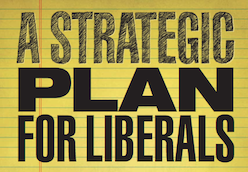This piece is part of the Prospect's series on progressives' strategy over the next 40 years. To read the introduction, click here.
The crisis facing workers in the United States began decades before 2007's recession, and that crisis is inextricably linked to the decline of the labor movement. America's workers are the world's most productive. They work harder and longer than workers in any other industrialized nation. Yet two-thirds of Americans live paycheck to paycheck.
It hasn't always been this way. Between 1935 and the mid-1970s millions of workers joined the middle class, and our nation's tremendous economic gains were shared almost equally among workers in every income group. This shared prosperity was made possible, in large part, by America's industrial labor unions and the particular model of worker organization enshrined in the 1935 National Labor Relations Act (NLRA).
But the world in which unions grew and thrived has disappeared. Our labor laws, and the organizing and representation models they require, are increasingly irrelevant to today's workers and industries. Right now, there are more workers with no legal right to form a union then there are union members in America. We need new strategies that are responsive to a changed work environment and our information and service economy. But too many unions continue to pursue the same strategies, under the same laws that we've followed for the past 80 years. It's time to seed an era of innovation and organizing that comports with our changing economy and can advocate powerfully on behalf of a 21st-century workforce.
America's unions and our allies must have the courage to acknowledge that the crisis we face cannot be met with old models and old tools. We must imagine an alternative future, even if we do not yet know what form it will take. We must embrace risk and failure as necessary elements of a long-term strategy for success.
America's unions should now assign our top talent and our still-substantial financial resources to the task of creating a new labor movement for the 21st-century-a task on which we should partner with allies in the progressive nonprofit, business, and government sectors. We must prioritize the identification of new models of collective strength that are powerful enough to create real economic change for workers, that can be scaled to benefit millions of workers, and that are economically self-sustaining.
Unions should create new centers for social innovation, independent of union political structures. Think of them as business incubators and venture capital funds to which social entrepreneurs seeking to create new organizational platforms for achieving worker power would turn for financing, expertise, and support.
Unlike unions of the mid-20th century, today's unions and their leaders won't be remembered for the contracts they bargained, the strikes they led, or the workers they organized under the NLRA. Just as John L. Lewis is remembered today for creating a new kind of union, we'll be remembered-or won't be-for whether we had the vision to reallocate our resources and our talent on a massive scale to create a new model for worker advocacy, power, and organization that can give rise to an American middle class for the 21st century.




